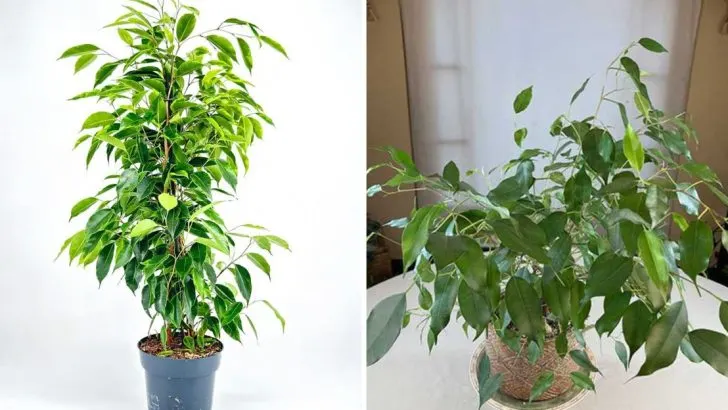Ficus Benjamina, also known as the weeping fig, is a popular houseplant that can bring a touch of elegance to any space. While it’s relatively easy to care for, it’s not immune to a few common issues that might leave you scratching your head. If you’ve noticed your Ficus not looking as vibrant as it once did, or if you’re dealing with unexpected problems, you’re not alone. The good news is, most of these problems have simple fixes.
From yellowing leaves to drooping branches, many of the issues you might face with a Ficus Benjamina can be traced back to a few key factors like watering habits, light conditions, or pest infestations. Understanding the causes behind these symptoms can help you take the right steps to restore your plant to its former glory. With a little attention and care, your Ficus can bounce back and thrive again, showing off its beauty and resilience.
Leaf Drop
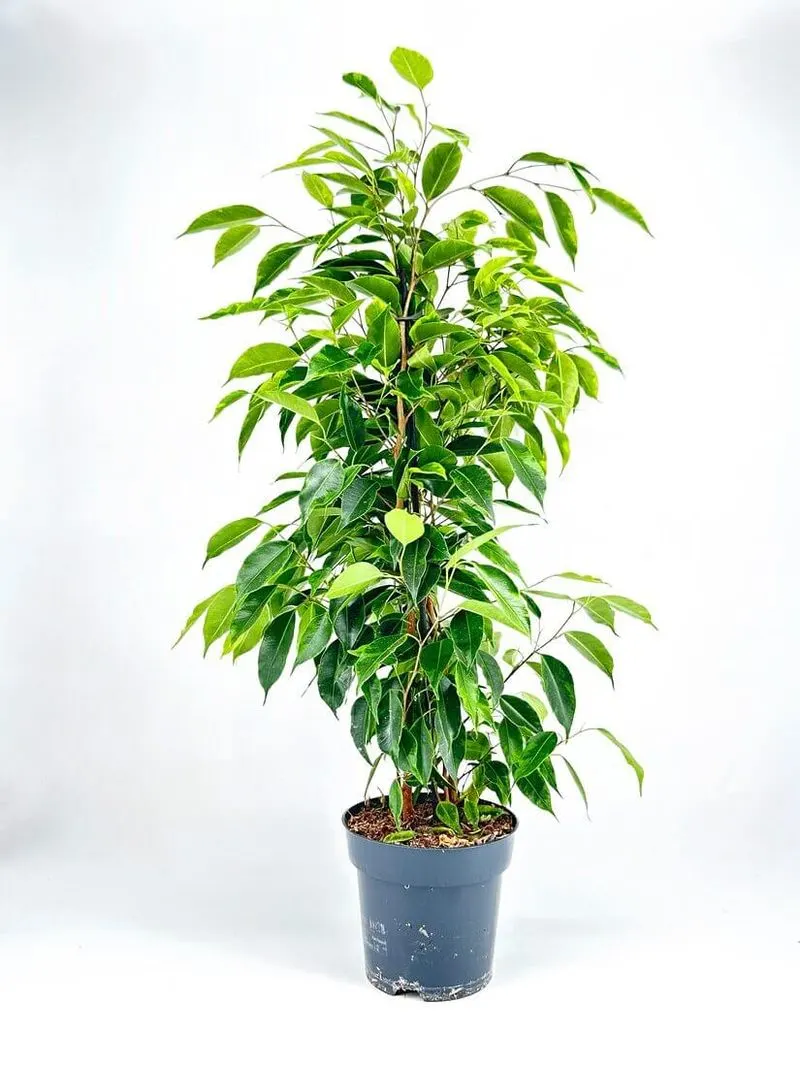
Leaf drop is a common challenge with Ficus Benjamina, often caused by environmental changes. When moving the plant to a new location, it may shed leaves in response to stress. Ensure the plant is in a stable environment, keeping temperature and humidity consistent. Another cause can be overwatering or underwatering, upsetting the balance the plant requires. Check the soil moisture regularly and adjust watering practices accordingly. To help the plant recover, prune any dead or severely affected leaves and maintain a consistent care routine. This adaptability will allow it to regain its foliage over time.
Yellow Leaves
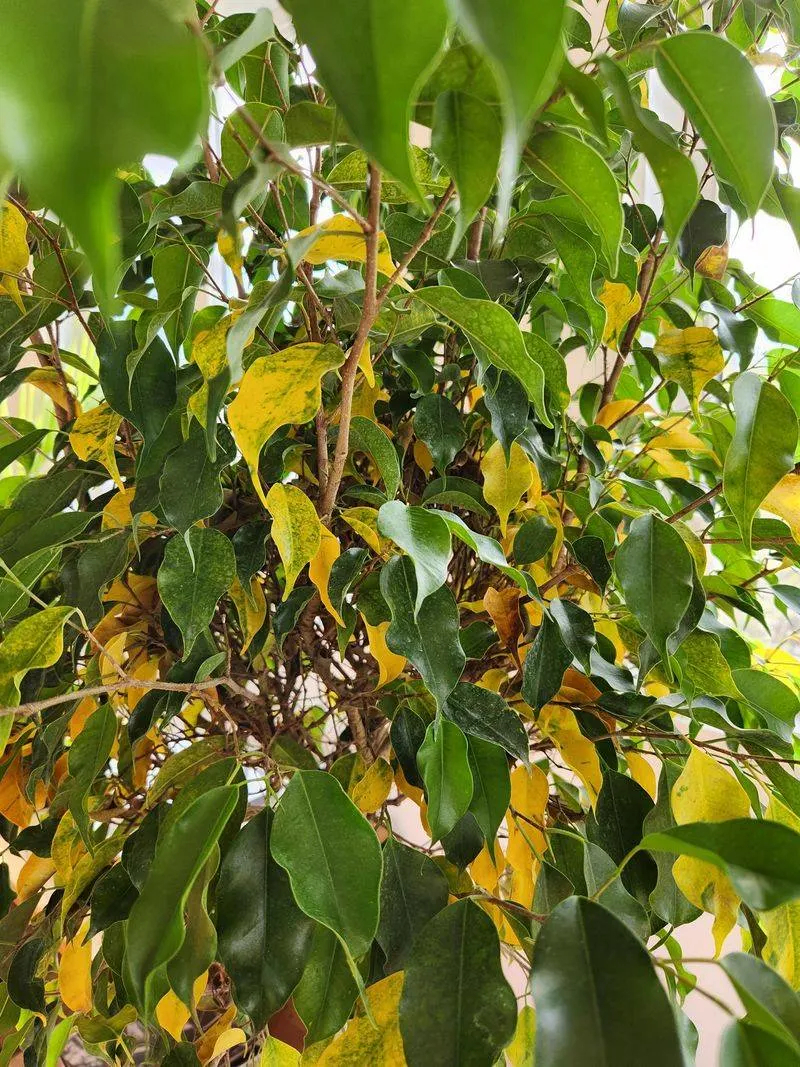
Yellow leaves on a Ficus Benjamina can indicate several issues, primarily related to watering. Overwatering is the usual culprit, causing root rot and nutrient deficiencies. Make sure the pot has good drainage and avoid letting the plant sit in waterlogged soil. Underwatering, conversely, can lead to dehydration and yellowing. Monitor the soil moisture and adjust your watering schedule accordingly. If the yellowing persists, consider checking for pests, as these can also cause leaf discoloration. By addressing these factors, you can restore the vibrant green leaves your plant is known for.
Spider Mites
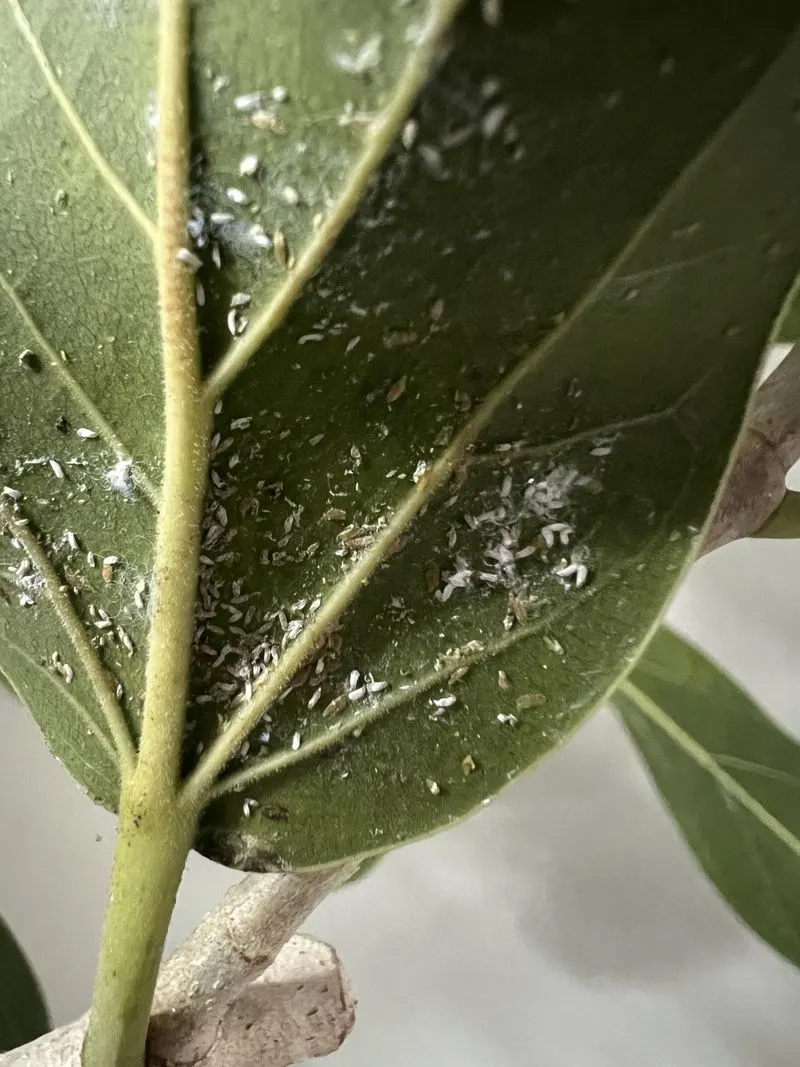
Spider mites are tiny pests that can infest Ficus Benjamina, leading to speckled leaves and a weakened plant. These pests thrive in dry conditions, so increasing humidity can help deter them. Mist the leaves regularly or place a humidifier nearby. If an infestation occurs, wash the plant with a strong stream of water to dislodge the mites. In severe cases, use a miticide or insecticidal soap for more effective control. Regularly inspect your plant for early signs of mites, as catching them early can prevent widespread damage and preserve your plant’s health.
Root Rot
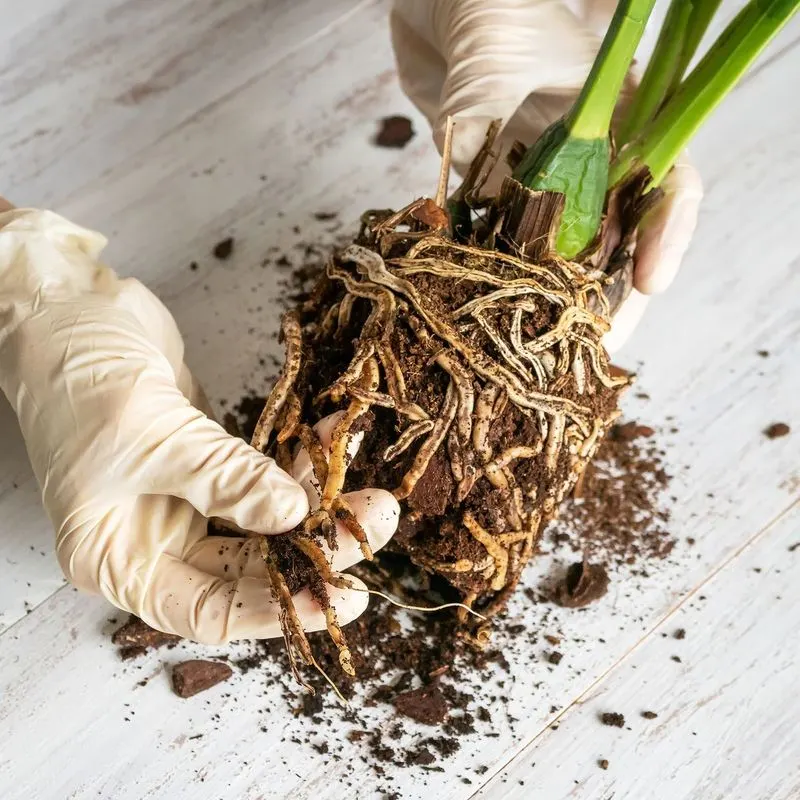
Root rot is a serious condition that affects Ficus Benjamina, often due to overwatering. If the roots are brown and mushy, immediate action is required. Carefully remove the plant from its pot and trim away the affected roots with sterilized scissors. Repot using fresh, well-draining soil to promote healthy new growth. Ensure the pot has drainage holes to prevent water accumulation. After repotting, water the plant sparingly until it shows signs of recovery. Paying attention to watering habits and soil conditions is crucial in preventing root rot from developing again, safeguarding your plant’s future.
Scale Insects
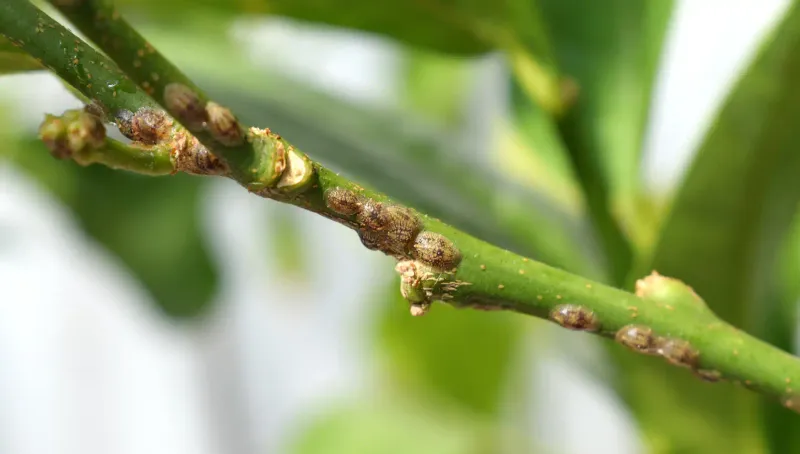
Scale insects are another pest that can plague Ficus Benjamina, feeding on sap and weakening the plant. They appear as small, brown bumps on stems and leaves. To effectively remove them, use a cotton swab dipped in alcohol and gently wipe the insects off. For larger infestations, insecticidal soap can be applied. Regular monitoring and maintaining cleanliness around the plant can prevent recurrence. Enhancing plant health with balanced fertilization can help it resist pests. By staying vigilant and addressing scale insects promptly, you can maintain a healthy, thriving Ficus Benjamina.
Brown Leaf Tips

Brown leaf tips on Ficus Benjamina can result from several factors, including low humidity, over-fertilization, or salt accumulation. Increase humidity by misting or using a pebble tray with water under the plant. If over-fertilizing is suspected, flush the soil with water to remove excess salts. Use a balanced, diluted fertilizer to prevent nutrient burn. Regularly check for signs of improvement and adjust care as needed. Brown tips may not disappear completely, but these measures will prevent further damage and keep your plant looking its best. Proper care ensures a healthy, lush appearance over time.
Leaf Curl
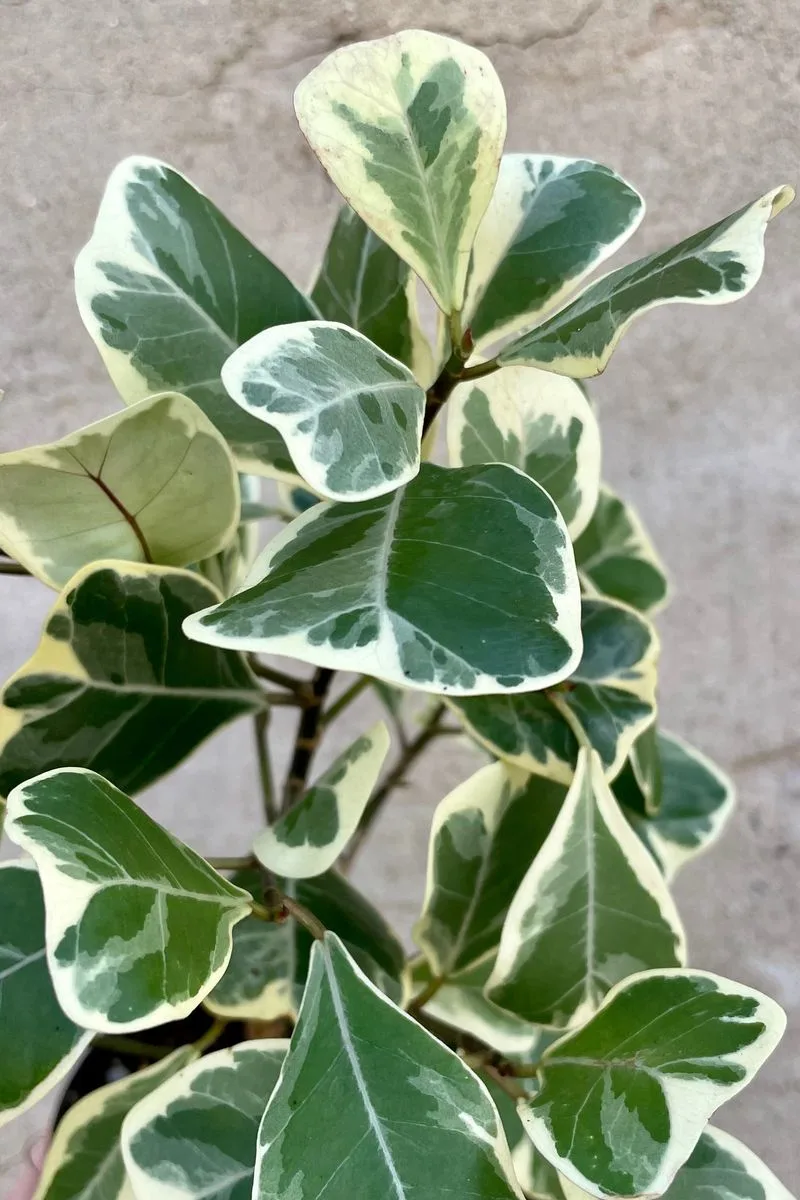
Leaf curl in Ficus Benjamina can be caused by stress factors like temperature fluctuations, pests, or improper watering. Ensure the plant is kept away from drafts and sudden temperature changes. Pest infestations, such as aphids, can also lead to curling leaves, so regular checks are crucial. Adjust watering practices to maintain even soil moisture, avoiding extremes. Providing a stable environment with consistent care will help prevent leaf curl. Over time, with these adjustments, your plant will likely see an improvement in leaf health. Observing your plant’s response aids in fine-tuning its care.
Wilting Leaves
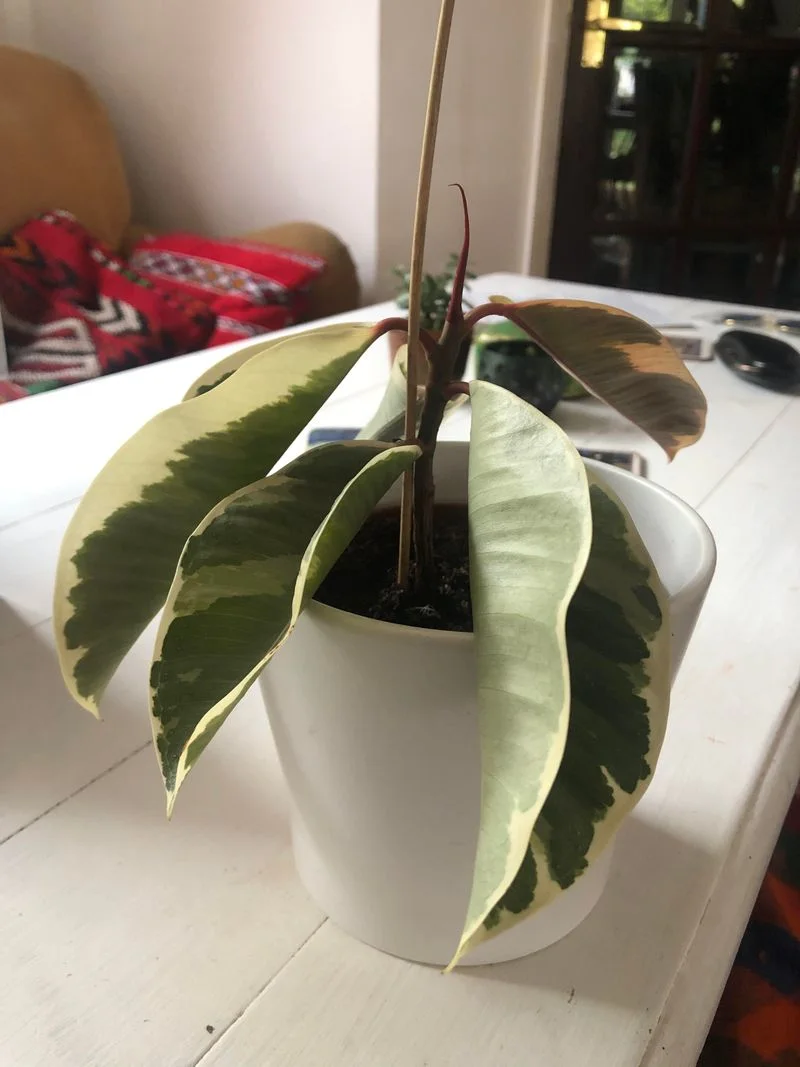
Wilting leaves in Ficus Benjamina can be alarming, often signaling water-related issues. Both overwatering and underwatering can cause this symptom. Assess the soil moisture level to determine the problem. If overwatered, allow the soil to dry out slightly before watering again. For underwatering, increase the frequency of watering to keep the soil consistently moist but not soggy. Wilting may also be due to root problems or environmental stress, such as low humidity. By identifying the cause, appropriate adjustments can be made to revive the plant and restore its vitality.
Drooping Branches
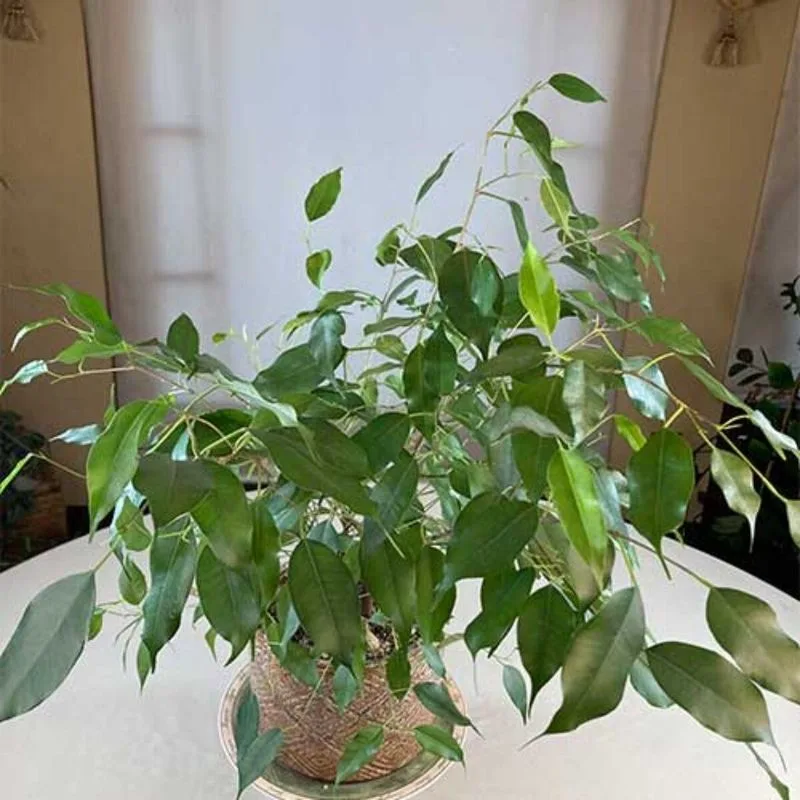
Drooping branches in Ficus Benjamina can result from insufficient light or uneven watering. Ensure the plant receives adequate indirect sunlight to support its growth. If light isn’t the issue, check the watering routine. Both overwatering and underwatering can impact branch health. Adjust the watering schedule to maintain even soil moisture. If drooping persists, consider pruning affected branches to encourage new growth. Providing a supportive environment with balanced care will help the plant regain its natural structure and vigor. Observing these factors consistently will contribute to a thriving Ficus Benjamina.
Pest Infestations
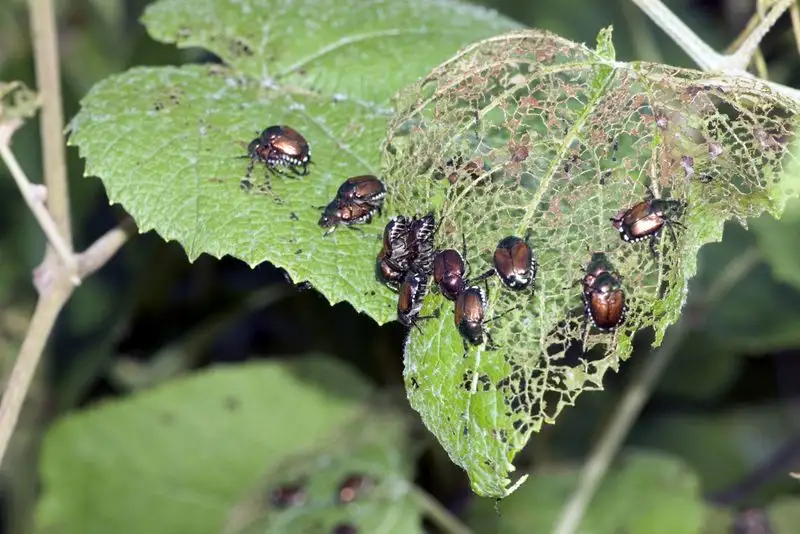
Pest infestations can severely affect Ficus Benjamina, stunting growth and damaging leaves. Common pests include aphids, mealybugs, and whiteflies. Regular inspection helps in early detection, preventing extensive damage. Remove visible pests manually or use insecticidal soap for effective control. Maintain optimal humidity levels, as dry conditions favor pest proliferation. Strengthening plant health with proper fertilization makes it more resilient. By acting swiftly and consistently, you can manage pest issues and preserve your plant’s health. Keeping your Ficus Benjamina pest-free ensures a robust and vibrant display of foliage.
Nutrient Deficiency
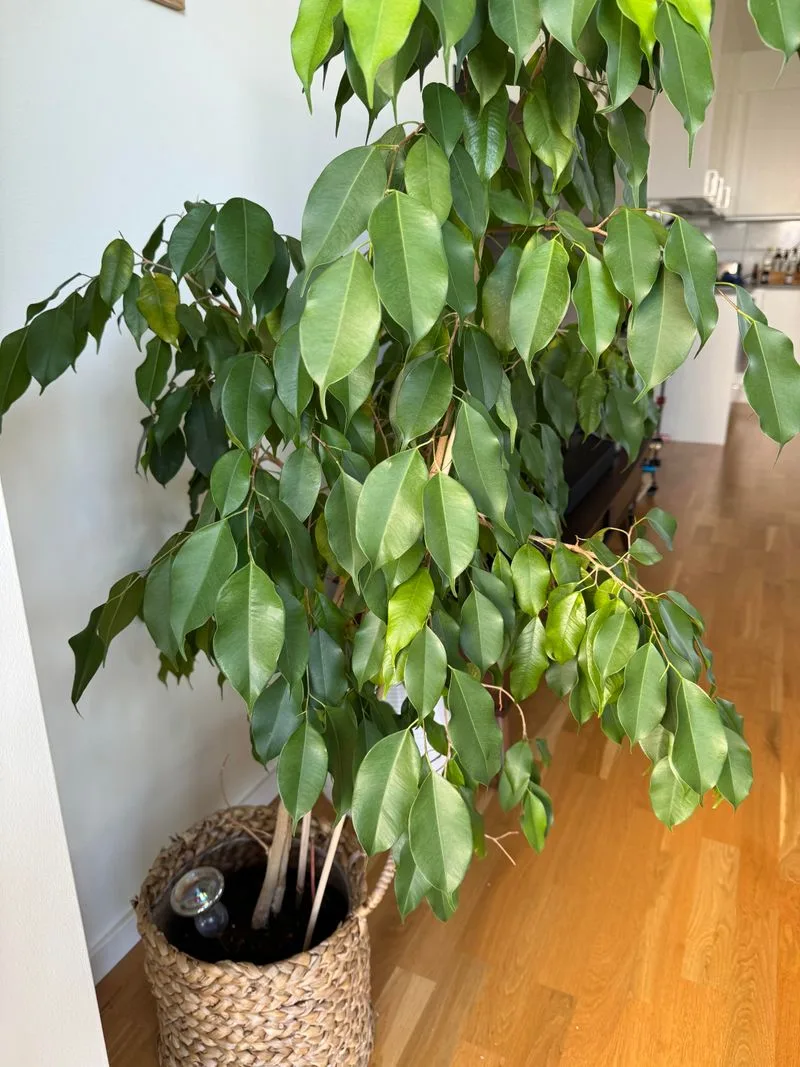
Nutrient deficiencies in Ficus Benjamina can manifest as pale leaves and stunted growth. A balanced fertilizer applied during the growing season can correct deficiencies. Ensure the potting mix supports nutrient availability by selecting a high-quality soil blend. Over time, nutrient uptake can be hindered by salt buildup, so occasionally flush the soil with water. Regular feeding and monitoring will keep your plant vigorous and lush. Addressing deficiencies promptly leads to vibrant foliage and robust growth. A well-nourished plant is better equipped to fend off pests and diseases, ensuring long-term health.

